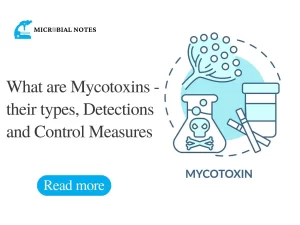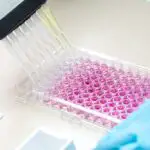Introduction
Systemic mycoses are a group of fungal infections that affect multiple organs or tissues in the body, leading to serious and potentially life-threatening illnesses. These infections can occur in both immunocompromised and immunocompetent individuals and are caused by a variety of fungal pathogens. Systemic mycosis can present with a wide range of clinical manifestations, from asymptomatic colonization to severe sepsis and organ failure.
Importance of understanding systemic mycosis
A systemic mycosis is an important group of fungal infections that can have significant implications for public health. These infections are often associated with high morbidity and mortality rates, particularly among immunocompromised patients. The emergence of drug-resistant fungal strains has also raised concerns about the efficacy of current treatment options. Understanding the epidemiology, pathogenesis, diagnosis, treatment, and prevention of systemic mycosis is essential for healthcare providers to effectively manage these infections and prevent their spread.
Types of systemic mycoses
Histoplasmosis.
Histoplasmosis is a systemic fungal infection caused by the fungus Histoplasma capsulatum. It is most commonly found in soil and bird droppings in areas with high humidity, such as the central and eastern United States, Central and South America, and parts of Africa and Asia.
Symptoms of histoplasmosis
The symptoms of histoplasmosis can vary widely depending on the severity of the infection and the individual’s immune system. Some people may not have any symptoms, while others may experience flu-like symptoms, including fever, chills, headache, muscle aches, and fatigue. In severe cases, histoplasmosis can lead to pneumonia, chronic lung disease, or disseminated disease affecting multiple organs.
Causative Agents:
Histoplasmosis is caused by the fungus Histoplasma capsulatum, which grows in soil that is rich in nitrogen and enriched with bird and bat droppings. The fungus can form small spores that become airborne when the soil is disturbed, such as during construction or demolition activities.
Transmission:
Histoplasmosis is transmitted through the inhalation of fungal spores that are present in the air. Activities such as cave exploration, construction work, and gardening can increase the risk of exposure to histoplasmosis spores. The infection is not contagious and cannot be transmitted from person to person.
E. Treatment:
Treatment for histoplasmosis typically involves antifungal medications, such as itraconazole or amphotericin B. The length of treatment can vary depending on the severity of the infection and the individual’s immune system. In severe cases, hospitalization may be necessary to provide supportive care and monitor the individual’s condition.
Blastomycosis
Blastomycosis is a systemic fungal infection caused by the fungus Blastomyces dermatitidis. It is found in soil and decaying organic matter, particularly in areas with moist soil such as the eastern and central United States, Canada, and parts of Africa.
Symptoms of blastomycosis
The symptoms of blastomycosis can vary widely depending on the severity of the infection and the individual’s immune system. Common symptoms include fever, cough, chest pain, fatigue, and muscle aches. In severe cases, blastomycosis can lead to pneumonia, skin lesions, and other organ involvement.
Causative Agents
Blastomycosis is caused by the fungus Blastomyces dermatitidis, which is commonly found in soil and decaying organic matter, particularly in areas with moist soil. The fungus can form small spores that become airborne when the soil is disturbed, such as during excavation or construction activities.
Transmission
Blastomycosis is transmitted through the inhalation of fungal spores that are present in the air. The infection is not contagious and cannot be transmitted from person to person.
Treatment
Treatment for blastomycosis typically involves antifungal medications, such as itraconazole or amphotericin B. The length of treatment can vary depending on the severity of the infection and the individual’s immune system. In severe cases, hospitalization may be necessary to provide supportive care and monitor the individual’s condition.
coccidioidomycosis.
Coccidioidomycosis, also known as “Valley fever,” is a systemic fungal infection caused by the fungus Coccidioides immitis or Coccidioides posadasii. It is found in the soil of arid regions, particularly in the southwestern United States, Mexico, and parts of Central and South America.
symptoms of coccidioidomycosis
The symptoms of coccidioidomycosis can range from mild flu-like symptoms to severe respiratory and systemic infections. Common symptoms include fever, cough, chest pain, fatigue, and muscle aches. In some cases, coccidioidomycosis can lead to pneumonia, skin lesions, and other organ involvement.
Causative Agents
Coccidioidomycosis is caused by the fungus Coccidioides immitis Coccidioides posadasii, which is commonly found in soil in arid regions. The fungus can form small spores that become airborne when the soil is disturbed, such as during windstorms or construction activities.
Transmission
Coccidioidomycosis is transmitted through the inhalation of fungal spores that are present in the air. The infection is not contagious and cannot be transmitted from person to person.
Treatment
Treatment for coccidioidomycosis typically involves antifungal medications, such as fluconazole or itraconazole. In severe cases, hospitalization may be necessary to provide supportive care and monitor the individual’s condition. The length of treatment can vary depending on the severity of the infection and the individual’s immune system.
Aspergillosis.
Aspergillosis is a fungal infection caused by Aspergillus fungi. The infection can occur in different parts of the body, including the lungs, sinuses, and other organs. The symptoms can vary depending on the site of the infection, but common symptoms include fever, cough, shortness of breath, chest pain, and fatigue.
Causative Agents
Aspergillosis is caused by Aspergillus fungi, which are commonly found in soil and decaying plant matter. There are several species of Aspergillus fungi, but the most common species that cause human infections are Aspergillus fumigatus and Aspergillus flavus.
Transmission
Aspergillosis is typically acquired through inhalation of Aspergillus spores, which are present in the air. The infection is not contagious and cannot be transmitted from person to person.
Treatment
Treatment for aspergillosis typically involves antifungal medications, such as voriconazole, itraconazole, or amphotericin B. The length of treatment can vary depending on the severity of the infection and the individual’s immune system. In severe cases, hospitalization may be necessary to provide supportive care and monitor the individual’s condition.
Prevention of aspergillosis involves avoiding exposure to Aspergillus spores, particularly for individuals with weakened immune systems or other risk factors. This can include using air filtration systems in buildings and wearing appropriate protective gear when working with soil or decaying organic matter.
candidiasis.
Candidiasis is a fungal infection caused by overgrowth of the Candida species of fungi, most commonly Candida albicans. The infection can occur in different parts of the body, including the mouth, throat, genitals, and skin. The symptoms can vary depending on the site of the infection, but common symptoms include itching, burning, redness, and discharge.
Causative Agents
Candidiasis is caused by overgrowth of Candida fungi, which are normally present in small amounts in the human body. The overgrowth can be caused by factors such as a weakened immune system, misuse of antibiotics or corticosteroids, hormonal changes, and diabetes.
Transmission
Candidiasis is not contagious and cannot be transmitted from person to person. However, individuals with weakened immune systems or other risk factors may be more susceptible to developing the infection.
Treatment
Treatment for candidiasis typically involves antifungal medications, such as fluconazole, clotrimazole, or nystatin. The length of treatment can vary depending on the severity of the infection and the individual’s immune system. In some cases, treatment may need to be repeated or long-term maintenance therapy may be necessary to prevent the recurrence of the infection.
Prevention of candidiasis involves maintaining good hygiene, avoiding prolonged use of antibiotics or corticosteroids, and addressing underlying conditions such as diabetes or HIV. It is important to seek medical attention if you suspect you may have candidiasis or are experiencing symptoms of infection.
Cryptococcosis
Cryptococcosis is a fungal infection caused by the fungus Cryptococcus neoformans or Cryptococcus gattii. The infection can affect various organs, including the lungs, brain, and skin. Common symptoms include headache, fever, cough, and shortness of breath.
Causative Agents
Cryptococcosis is caused by the fungus Cryptococcus neoformans or Cryptococcus gattii. These fungi are commonly found in the environment, particularly in soil contaminated with bird droppings. The infection is acquired by inhalation of fungal spores.
Transmission
Cryptococcosis is acquired by the inhalation of fungal spores. The infection is not contagious and cannot be transmitted from person to person.
Treatment
Treatment for cryptococcosis typically involves antifungal medications, such as fluconazole, amphotericin B, or flucytosine. The length of treatment can vary depending on the severity of the infection and the individual’s immune system. In some cases, treatment may need to be continued long-term to prevent recurrence of the infection.
Prevention of cryptococcosis involves avoiding environments that are likely to be contaminated with the fungus, such as areas with bird droppings. Individuals with weakened immune systems, such as those with HIV or organ transplant recipients, should take precautions to avoid exposure to the fungus.
Pneumocystis pneumonia
Pneumocystis pneumonia (PCP) is a type of lung infection caused by the fungus Pneumocystis jirovecii. It most commonly affects individuals with weakened immune systems, such as those with HIV/AIDS, cancer, or organ transplant recipients. Common symptoms include fever, cough, shortness of breath, and chest pain.
Causative Agents
Pneumocystis pneumonia is caused by the fungus Pneumocystis jirovecii. The fungus is commonly found in the environment, particularly in soil and dust. However, the exact mode of transmission and the natural reservoir of the fungus remain unclear.
Transmission
The mode of transmission of Pneumocystis jirovecii is still not fully understood. However, it is believed to be transmitted through the inhalation of airborne fungal spores. The fungus is not spread through casual contact or person-to-person transmission.
Treatment
Treatment for Pneumocystis pneumonia typically involves the use of antibiotics, specifically trimethoprim-sulfamethoxazole (TMP-SMX). Other medications, such as pentamidine, atovaquone, clindamycin with primaquine, may be used in individuals who cannot tolerate TMP-SMX. The length of treatment can vary depending on the severity of the infection and the individual’s immune system.
Prevention of Pneumocystis pneumonia involves the use of prophylactic medications, specifically TMP-SMX or dapsone, in individuals with weakened immune systems, such as those with HIV/AIDS, cancer, or organ transplant recipients. Good hygiene practices, such as frequent hand washing and avoiding contact with individuals who are sick, may also help reduce the risk of infection.
Zygomycosis
Zygomycosis also known as mucormycosis is a rare but serious fungal infection that can affect various parts of the body, including the lungs, sinuses, brain, and skin. Common symptoms may include fever, headache, facial pain, nasal congestion, and skin lesions. In severe cases, the infection can lead to tissue death, organ damage, and even death.
Causative Agents
Zygomycosis is caused by a group of fungi known as Zygomycetes, which are commonly found in soil, decaying organic matter, and animal excrement. These fungi can cause infection in individuals with weakened immune systems, as well as in individuals who have experienced trauma, burns, or surgical wounds.
Transmission
Zygomycosis is not contagious and cannot be transmitted from person to person. The fungus enters the body through the inhalation of fungal spores or through direct contact with contaminated soil or decaying organic matter.
Treatment
Treatment for zygomycosis typically involves a combination of antifungal medication and surgical removal of infected tissue. The antifungal medication of choice is usually amphotericin B, which is given intravenously. Other antifungal medications, such as posaconazole or isavuconazole, may also be used. In severe cases, surgery may be necessary to remove infected tissue and prevent the spread of the infection.
Prevention of zygomycosis involves good hygiene practices, such as washing hands regularly, avoiding contact with contaminated soil or decaying organic matter, and controlling underlying medical conditions that weaken the immune system.
Diagnosis
Diagnosing systemic mycosis can be challenging due to the diverse range of clinical presentations and the nonspecific nature of symptoms. The diagnosis of systemic mycosis requires a combination of clinical, radiological, and microbiological investigations. Here, we will discuss each of these in more detail.
Clinical manifestations
Clinical manifestations of systemic mycosis can vary depending on the causative organism, the extent of infection, and the immune status of the host. Some common symptoms of systemic mycosis include fever, cough, chest pain, dyspnea, weight loss, night sweats, and fatigue. Skin lesions, hepatosplenomegaly, lymphadenopathy, and meningitis can also occur in some cases. A detailed medical history and physical examination can provide valuable clues for diagnosis.
Radiological findings
Radiological imaging plays an important role in the diagnosis of systemic mycosis. Chest radiography, computed tomography (CT), and magnetic resonance imaging (MRI) can be used to detect pulmonary and extrapulmonary lesions caused by systemic mycosis. Radiological findings can vary depending on the causative organism, but can include infiltrates, nodules, cavities, and pleural effusions. In some cases, radiological findings may be nonspecific, requiring further microbiological investigations to confirm diagnosis.
Microbiological investigations
Microbiological investigations are essential for confirming the diagnosis of systemic mycosis. Culturing of fungal pathogens from clinical specimens, such as blood, urine, sputum, or cerebrospinal fluid, is the gold standard for diagnosis. Fungal stains and serological tests, such as enzyme-linked immunosorbent assay (ELISA) or polymerase chain reaction (PCR), can also be used to detect fungal antigens or nucleic acids in clinical specimens. However, these tests are often less sensitive and specific than culturing
Modes of transmission
Systemic mycosis is primarily caused by the inhalation of fungal spores or particles from contaminated soil or bird droppings. Fungal spores can also be transmitted through direct contact with infected tissue or contaminated medical equipment. Systemic mycosis can be acquired through occupational exposure, such as in agriculture or construction industries, or through recreational activities such as caving or spelunking. The risk of acquiring systemic mycosis is higher in individuals with compromised immune systems, such as those with HIV/AIDS or those undergoing chemotherapy.
Prevention and control of systemic mycosis
Prevention and control of systemic mycosis can be challenging, as these infections are often caused by opportunistic fungi that are ubiquitous in the environment. Prevention and control measures include environmental measures, personal protective measures, and immunization.
Environmental measures
Environmental measures aim to reduce exposure to fungal pathogens in the environment. This includes measures such as proper cleaning and disinfection of hospital rooms, air filtration systems, and proper maintenance of ventilation systems. In certain settings, such as construction sites or areas with high levels of dust or soil, appropriate respiratory protection and control measures should be implemented.
Personal protective measures
Personal protective measures aim to reduce the risk of infection among individuals who are at increased risk of developing systemic mycosis, such as immunocompromised patients. This includes measures such as hand hygiene, use of appropriate personal protective equipment, and avoidance of high-risk activities, such as construction or gardening. Healthcare workers who care for patients with systemic mycosis should be educated on the risks of infection and appropriate infection control measures.
Immunization
Immunization against fungal pathogens is an area of ongoing research. Some vaccines have shown promise in preclinical and early clinical studies, but currently, there are no commercially available vaccines for systemic mycosis. Immunocompromised patients may benefit from vaccination against influenza and other respiratory viruses, as these infections can increase the risk of developing systemic mycosis.
Conclusion
Future research directions in systemic mycosis are focused on improving our understanding of the pathogenesis and epidemiology of these infections, as well as developing new diagnostic and therapeutic strategies. With the emergence of drug-resistant fungal strains, there is a pressing need to identify new antifungal agents and improve the efficacy of existing treatments.
In addition, there is a need to develop more accurate and sensitive diagnostic tests that can rapidly identify fungal pathogens and guide treatment decisions. The development of new vaccines and immunotherapeutic approaches may also play a critical role in preventing and managing systemic mycosis. Finally, greater efforts are needed to understand the environmental and host factors that contribute to the emergence and spread of fungal pathogens, in order to develop effective strategies for prevention and control.
References
https://www.adelaide.edu.au/mycology/mycoses/dimorphic-systemic-mycoses







